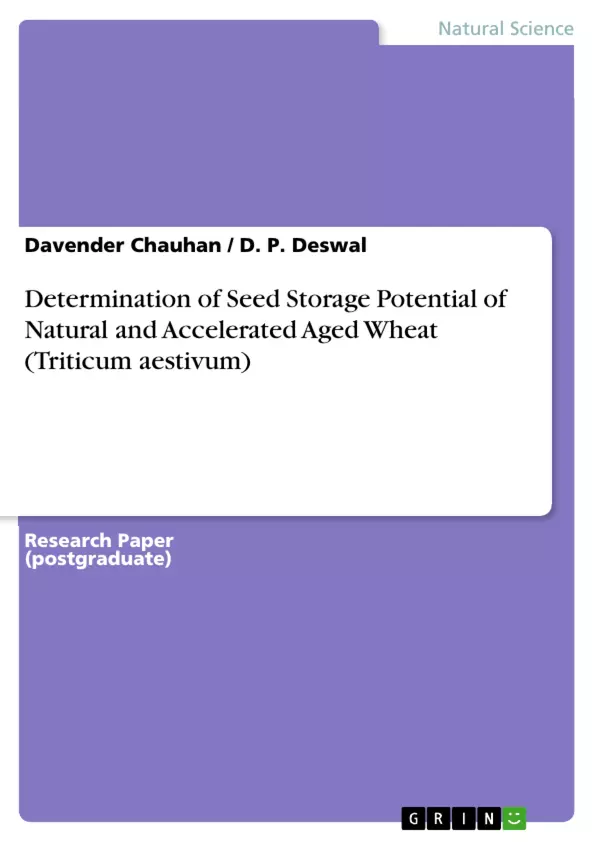ABSTRACT: Seed of six varieties of wheat (Triticum aestivum) viz. C-306, PBW-502, WH-542, WH-711, WH-283 and RAJ-3765 were subjected to natural vis-à-vis accelerated ageing conditions and evaluated for relative storage potential of the seeds of respective varieties and ageing conditions. Seeds of all the varieties found 18 months of storability except the variety C-306 in term of minimum seed certification standards (MSCS) for germination percentage. Whereas variety RAJ-3765 was adjudged to have poor storability as it showed 18 months of seed storage potential under ambient conditions. After two years of storage all the wheat varieties loss their germination below minimum seed certification standards (MSCS). Maximum germination percentage retained by variety PBW-502(79.00), considered to have good storability as compared to others whereas minimum germination percentage retained by variety C-306(71.33) found to have poor storability. In case of accelerated aged seed lot maximum germination percentage retained by variety PBW-502(55.00) showed good storability whereas RAJ-3765(44.00) retained minimum germination percentage which showed poor storability among all varieties followed by C-306(47.00). Thus in both conditions natural and accelerated aged seed PBW-502 was adjudged good and RAJ-3765 was as poor storage genotypes. Secondly accelerated aged seed is having poor storability as compare to natural aged seed.
Inhaltsverzeichnis (Table of Contents)
- 1MATERIALS AND METHODS
- RESULTS AND DISCUSSION
- Table 1: Effect of natural ageing on seed germination (%) in Wheat
- Table 2: Effect of natural ageing on vigor index in Wheat
- Table 3: Effect of natural and accelerated ageing on Germination of wheat
- Table 4: Effect of natural and accelerated ageing on vigor index of wheat
Zielsetzung und Themenschwerpunkte (Objectives and Key Themes)
This research aimed to determine the seed storage potential and relative storability of six wheat varieties under both natural and accelerated ageing conditions. This study sought to identify wheat varieties with good and poor storage potential and investigate the impact of ageing on seed quality.
- Seed storage potential of different wheat varieties
- Impact of natural and accelerated ageing on seed germination and vigour
- Identification of wheat varieties with good and poor storage potential
- Comparison of seed storability under natural and accelerated ageing conditions
- Effects of ageing on seed structure, biochemistry, and genetics
Zusammenfassung der Kapitel (Chapter Summaries)
The research methodology involved collecting seed material from six wheat varieties and storing them under ambient conditions. Accelerated ageing was also employed to assess seed storability. Standard germination tests were conducted using ISTA seed testing rules, and the vigour index was calculated.
The results revealed that different wheat varieties exhibited varying storage potential, with C-306 showing a decline in germination percentage below minimum seed certification standards after 18 months of ambient storage. PBW-502, on the other hand, maintained a higher germination percentage. Similarly, accelerated ageing demonstrated variability in seed storability among the varieties, with PBW-502 again showing better storage potential.
Schlüsselwörter (Keywords)
The key terms and concepts explored in this study include seed storage potential, wheat, natural ageing, accelerated ageing, seed quality, seed germination, seed vigour, minimum seed certification standards (MSCS), and genotype-specific responses to ageing.
- Quote paper
- Davender Chauhan (Author), D. P. Deswal (Author), 2010, Determination of Seed Storage Potential of Natural and Accelerated Aged Wheat (Triticum aestivum), Munich, GRIN Verlag, https://www.grin.com/document/176550



